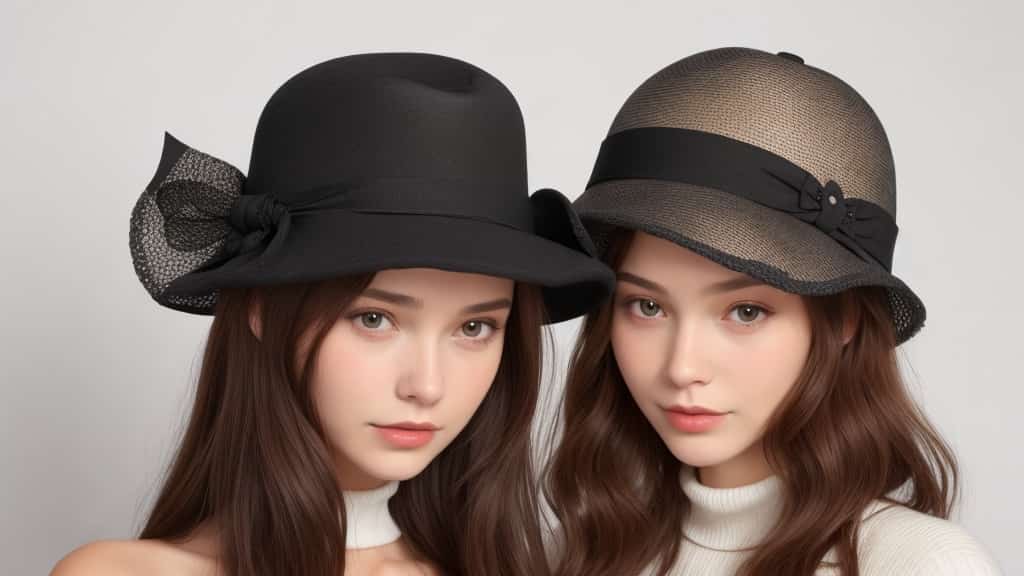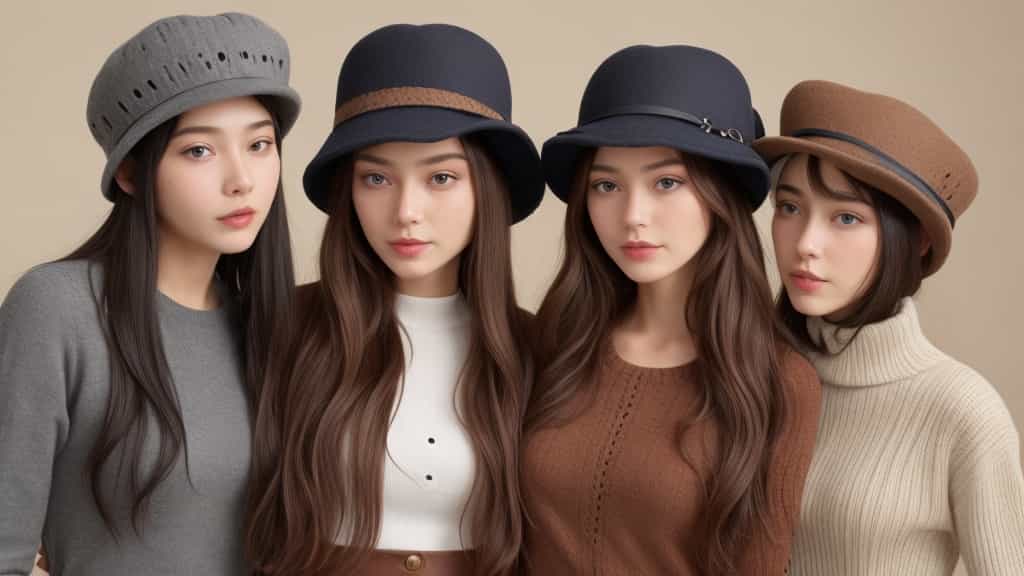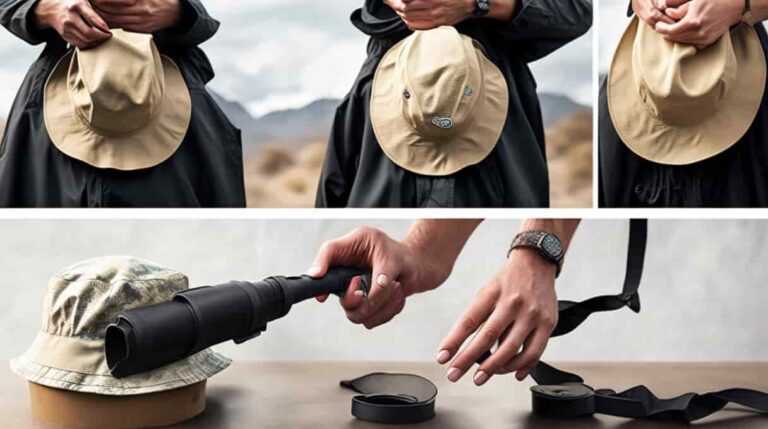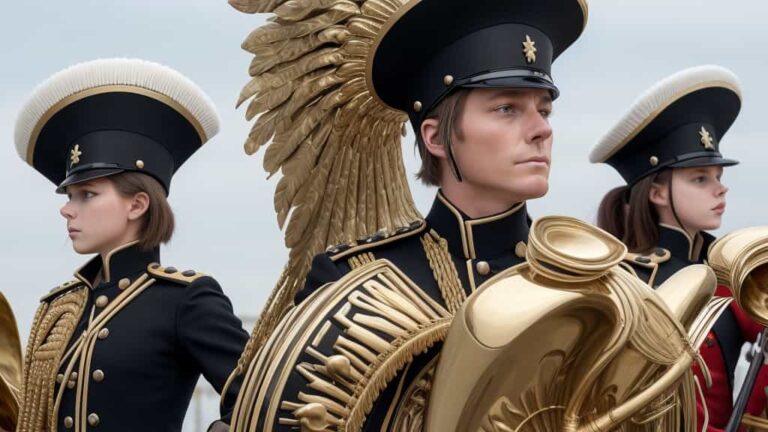Hats, those versatile companions that sit atop our heads, have been a constant throughout history. Yet, one subtle but significant feature seems to intrigue many: Why do hats have holes? Dive in as we explore this unique facet of headgear.
Table of Contents
The Evolution and Purpose of Hat Holes
One of the ever-evolving facets of human civilization is its clothing and accessories. While they have always played a functional role in protecting us, they have equally been an expression of culture, aesthetics, identity, and status. Among these accessories, hats hold a distinctive place. Holes in hats have different functions based on the types of hats like fedoras, beanies, or chef hats.
Hats as Symbols
Over time, as societies grew complex, so did their customs and symbols. In some cultures, the number and arrangement of holes in hats began to hold particular importance. A specific pattern might denote a wearer’s rank, clan, or profession. For instance, in certain African tribes, a hat’s pattern could indicate a warrior’s valiant deeds or a chieftain’s lineage.
The Shift Towards Functionality
As humans spread across various climates and topographies, the necessity for more functional apparel arose. Enter the evolving purpose of hat holes. While earlier, they might have been purely decorative or symbolic, in hotter climes, these holes became vital.
They allowed airflow, providing a relief from the scorching sun and preventing heat accumulation. A dual-purpose was thus achieved – symbolism combined with comfort. Some hats like those worn in musical bands have specific designs that might include holes for better acoustics.
The function of holes in hats becomes even more important in sports like golf where the athletes are exposed to the sun for prolonged periods. In sports like baseball, the design of the cap, including any holes, is optimized for both style and function.

Scientific Rationale Behind Hat Holes
While the cultural implications of hat designs are fascinating, there’s an undeniable science behind the utility of hat holes. To understand this better, we need to dive into the realms of human physiology and thermodynamics.
The Science of Sweating
The human body is a wonder, constantly regulating its internal temperature to ensure optimal function. When our body heats up, either due to external temperatures or physical activity, it releases sweat – our natural cooling mechanism. This sweat, when exposed to air, evaporates, and in the process, cools us down. The head, with its dense hair, can often become a heat trap. And here’s where the hat, especially one with holes, comes in.
A hat without adequate ventilation can impede the evaporative process. Sweat accumulates, and instead of evaporating and cooling the scalp, it drips down, causing discomfort. Hat holes promote this necessary evaporation. They allow ambient air to flow over the sweat, facilitating quicker evaporation and thus, effective cooling.
Thermodynamics and Hats
Delving deeper into thermodynamics, we understand that heat always moves from a warmer object to a cooler one. When you wear a hat under the sun, the trapped heat from your head seeks to move to the cooler environment outside. Hat holes serve as conduits for this heat transfer.
Additionally, these holes reduce the hat’s overall heat capacity. With fewer materials to trap heat, the hat itself remains relatively cooler, providing comfort to the wearer. This is especially true for hats made of materials with higher thermal conductivities, like metal or certain synthetic fabrics.
While holes in hats provide ventilation, excessive hat-wearing can still lead to various issues.”
Modern-day Implications and Adaptations
The Fusion of Form and Function
Modern fashion isn’t just about wearing something that looks good; it’s about wearing something that feels good. As consumers become more discerning and aware, there’s a rising demand for products that seamlessly blend aesthetic appeal with practical utility. And hats are no exception to this trend.
Designer Ingenuity: Making a Statement
Today’s fashion world thrives on innovation. World-renowned fashion houses, from Milan to New York, constantly push boundaries. The hat, a classic accessory, has become a canvas for this creativity. Where once hat holes were primarily for airflow, designers now incorporate them into intricate patterns, branding elements, or even avant-garde statements. Imagine a high-fashion runway where a model dons a hat with holes that form a constellation pattern, telling a story that transcends mere functionality.
Wearing a hat backwards can influence the utility of hat holes, particularly for snapbacks and trucker hats.
Consumer Demand: Comfort in the Spotlight
While the fashion industry’s pace is rapid, it doesn’t overshadow the core purpose of clothing and accessories – comfort. With global warming and increasing temperature fluctuations, the demand for comfortable, ventilated hats is on the rise. In urban settings, where concrete jungles amplify heat, a well-ventilated hat isn’t just a luxury; it’s a necessity.

Popular Styles and Their Purposes
A Tale Told on the Tennis Court
Step onto any tennis court, and you’ll spot players sporting caps with pronounced ventilation. These aren’t just for show. Intense physical activity generates sweat, and for a tennis player, dripping sweat can be a considerable distraction. The mesh design in these caps aids in the efficient evaporation of sweat, ensuring the player’s focus remains unhindered by discomfort.
The Runway Revolution
The fashion runway, often considered the birthplace of trends, has seen a surge in hats with innovative hole designs. Be it leather caps with laser-cut patterns or wide-brimmed hats with spaced perforations, the idea is to make a statement. These hats scream individuality and are often the accessory that ties an entire ensemble together.
Rodeo Rhythms: The Cowboy Legacy
One cannot discuss hats without mentioning the iconic cowboy hat. Steeped in history and tradition, the cowboy hat is a symbol of ruggedness and the American frontier spirit. While they have always had a characteristic shape, modern adaptations incorporate ventilation gaps. These aren’t just random perforations; they are often patterned to represent certain cultural symbols or icons. Besides adding to the hat’s aesthetic appeal, they also provide much-needed relief from the often blistering sun of the open range.
Sports Caps: Meshing Around
Ventilation in hats found a significant boost with the introduction of mesh materials. Sports caps, especially those seen in baseball or running, frequently employ mesh panels. They allow for optimal airflow, reduce the hat’s weight, and adapt comfortably to different head shapes. The added bonus? They look incredibly stylish.

Anecdotes and Curious Facts
When in Rome, Count the Holes
The vast empire of ancient Rome, known for its rich culture and societal hierarchies, had peculiar ways to distinguish between different classes and professions. One such method was through the hats they wore. Legends suggest that the number of holes in a hat could signify one’s social standing. A high-ranking official might have a hat adorned with numerous holes, while a commoner’s hat would be simpler. These perforations became silent markers of status and power in a society where status was everything.
Hollywood’s Holey Adventures
The world of cinema often draws inspiration from the quirkiest of real-life facts. In one such intriguing Hollywood tale, a movie’s protagonist had a distinctive hat with uniquely patterned holes. These holes became an unexpected clue that led to solving a grand mystery. While the film might have taken liberties with reality, it showcased the depth of cultural significance attached to the seemingly trivial aspect of hat holes.
The Whispering Hats of the Mongolian Steppes
Venturing towards Asia, there are tales from the vast Mongolian steppes where hats played a role in communication. Nomads would sometimes relay messages using a code based on the number and arrangement of hat holes. To an outsider, they appeared as mere decorative elements, but to the initiated, they told tales of wars, love, and treacheries.
What Are the Holes in Bucket Hats Called?
Ah, the iconic bucket hat—forever the staple of festival goers, fishermen, and the fashion-forward crowd. But have you ever stopped to consider those mysterious little holes that often punctuate the sides of this classic headgear? Those holes aren’t just a design quirk; they have a name and a purpose. They’re called “grommets,” and understanding why they’re there might just give you a new appreciation for this seemingly straightforward accessory.
Meet the Grommet: The Unsung Hero
Grommets are small rings or eyelets, usually made of metal, rubber, or plastic, that reinforce the holes in the fabric. They provide durability and prevent the fabric from tearing under stress. Ever wondered why your trusty bucket hat can withstand wind, rain, and the occasional snag on a tree branch? You can thank the humble grommet for that.
The Genesis of the Grommet
The use of grommets in hats dates back to sailors and fishermen who needed functional, durable hats that could withstand the elements. As seafarers battled harsh winds and sea sprays, their hats were at risk of tearing. The grommet provided a practical solution, reinforcing the fabric and ensuring the hat was up to the task. Over time, the grommet made its way from the utilitarian sailor cap to the fashionable bucket hat, bridging the gap between functionality and style.
Grommets and Ventilation: A Breath of Fresh Air
Let’s talk science for a second. One reason grommets are so cherished is their contribution to a hat’s ventilation system. Remember those times when you took off your hat and felt that little gust of air? That’s the grommet at work. Its role in ventilation not only helps to keep your head cool but also aids in moisture evaporation. So, if you’re wearing your bucket hat during an intense hike or a sunny day at the beach, those grommets help to regulate temperature and keep you comfortable.
The Cultural Impact of the Grommet
Not all bucket hats have grommets, but the ones that do often hold cultural significance. In the Australian Outback, for instance, bucket hats with grommets are almost a necessity due to the extreme heat and exposure to the sun. Similarly, in urban streetwear, the grommeted bucket hat has become an emblem of style, celebrated for its retro aesthetic and practical application.
The Art of Choosing the Right Grommet
There’s a certain finesse to choosing a bucket hat with the perfect grommets. Factors like material, size, and placement can make a significant difference in both the hat’s durability and its aesthetic appeal. A chrome grommet adds a touch of elegance, while a rubber one might suit a sporty look.
Understanding what you need from a grommet will help you make an informed choice, adding another layer to your hat-wearing experience. If you find that your hat isn’t sitting well, there are ways to adjust it for better comfort, but it’s not necessarily about the holes.

What Is the Hole in the Back of a Baseball Cap Called?
Ah, the classic baseball cap. A symbol of Americana, sport, and casual style, these caps have topped heads from the ballpark to the runway. But have you ever wondered about that little hole at the back of the cap? That hole, my friends, isn’t just a design afterthought—it’s an integral feature known as the “buttonhole” or the “adjustment hole,” and its presence says a lot more than you might think.
The Adjustment Hole: More Than Meets the Eye
The hole at the back serves a functional purpose: it’s a gateway for an adjustable strap, whether it’s a snapback, strapback, or Velcro. This feature ensures that the cap can accommodate different head sizes and shapes, offering a tailored fit that’s hard to achieve with a one-size-fits-all approach. Plus, it opens the door to a variety of closure styles, adding a subtle touch that can change the overall aesthetic of the cap.
The Science Behind the Hole
While the primary function of the adjustment hole is to allow for size customization, it also plays an indirect role in ventilation. When you tighten or loosen the strap, you’re also modulating airflow, either reducing or increasing the amount of air that can circulate through the cap. Although not its main purpose, it’s an interesting secondary feature that impacts the comfort level of the cap, particularly in hot or humid conditions.
A Cultural Staple Across Eras
Over the years, the baseball cap—and its iconic hole—has transcended its origins to become a fixture in various cultural landscapes. From hip-hop artists to Silicon Valley entrepreneurs, the adjustable baseball cap has become a fashion statement and a declaration of identity. The hole in the back has even spawned its own subcultures, with some people threading a ponytail through it as a unique style statement.
Why Do Hats Have Holes? Cowboy Version
Picture a cowboy, astride his horse, gazing out over a vast and untamed landscape. There’s something quintessentially American about this image, right down to the cowboy’s hat—a symbol of grit, determination, and freedom. But have you ever noticed that some cowboy hats come with small holes on their sides? These holes, often known as “grommets” or “ventilation eyelets,” aren’t just a design quirk. They’re functional elements that serve a purpose and tell a deeper story of this iconic headwear.
The Essential Function: The Great Outdoors Calls for Ventilation
Cowboys were—and still are—outdoorsmen who spend the majority of their days under the open sky. That’s a lot of sun, wind, and, let’s be honest, sweat. The grommets in cowboy hats serve a critical purpose here—they allow for ventilation. These tiny holes provide a channel for heat to escape and cool air to enter, thus keeping the cowboy’s head cooler during long hours in the sun.
Grommets: The Unsung Hero of Cowboy Attire
Like other hats we’ve explored, the grommet is a ring or eyelet that reinforces these ventilation holes, ensuring they don’t wear out or widen with frequent use. Often made of metal or reinforced fabric, these grommets are hard-wearing, much like the cowboys themselves. They are designed to withstand the elements, from the scorching sun to torrential downpours.
A Universal Yet Personal Touch: Customizations and Variations
Not every cowboy hat has grommets, and their absence or presence can often be a stylistic choice. Some modern cowboy hats have replaced traditional grommets with mesh crowns for improved ventilation, while others opt for no holes, relying instead on the natural breathability of materials like straw or felt. These choices can say a lot about the wearer’s preferences for tradition versus modern convenience.
Holes in hats may also relate to their manufacturing process, which could explain why some brands like Stetson and Eric Javits are so expensive.
More Than Meets the Eye: The Psychological Aspect
There’s also a psychological element to consider. The addition of these holes, whether you realize it or not, lends an air of ruggedness and durability to the hat. It sends a subtle message that this isn’t just a fashion statement—it’s a functional piece of clothing designed for a life lived outdoors.
Cultural Significance: Beyond the Ranch
While originating from the practical needs of ranch life, the cowboy hat—and its characteristic holes—have become cultural icons. You’ll find them at country music concerts, rodeos, and even on fashion runways. The design features that were once solely about functionality have become imbued with deeper symbolic meaning, representing a lifestyle that many find appealing, even if they’ve never set foot on a ranch.
7. Conclusion
Hats, more than just a piece of accessory, are emblematic of the intertwining strands of functionality, symbolism, and fashion. While on the surface, the question of “why do hats have holes?” might seem mundane, its answers delve deep into the core of human evolution and creativity.
The journey of understanding the presence of holes in hats is like threading a needle through centuries of human history. It’s a journey where every puncture is a tale, every space a silent witness to the ebbs and flows of society.
From the ancient deserts of Mesopotamia to the chic runways of Paris, from the rugged terrains of American ranches to the bustling streets of Tokyo, hats and their holes have adorned, protected, signified, and ventilated.
In today’s world, where rapid technological advancements sometimes make us overlook the elegance of simplicity, the story of hatholes serves as a gentle reminder. It beckons us to appreciate the depth in details, to understand that every design, no matter how minute, has a legacy attached.
So, the next time you pull on your favorite cap or tilt your wide-brimmed hat just right, take a moment. Behind those holes is a history rich and profound, waiting to be acknowledged and celebrated. You’re not just wearing a hat; you’re donning a piece of human ingenuity and tradition.






